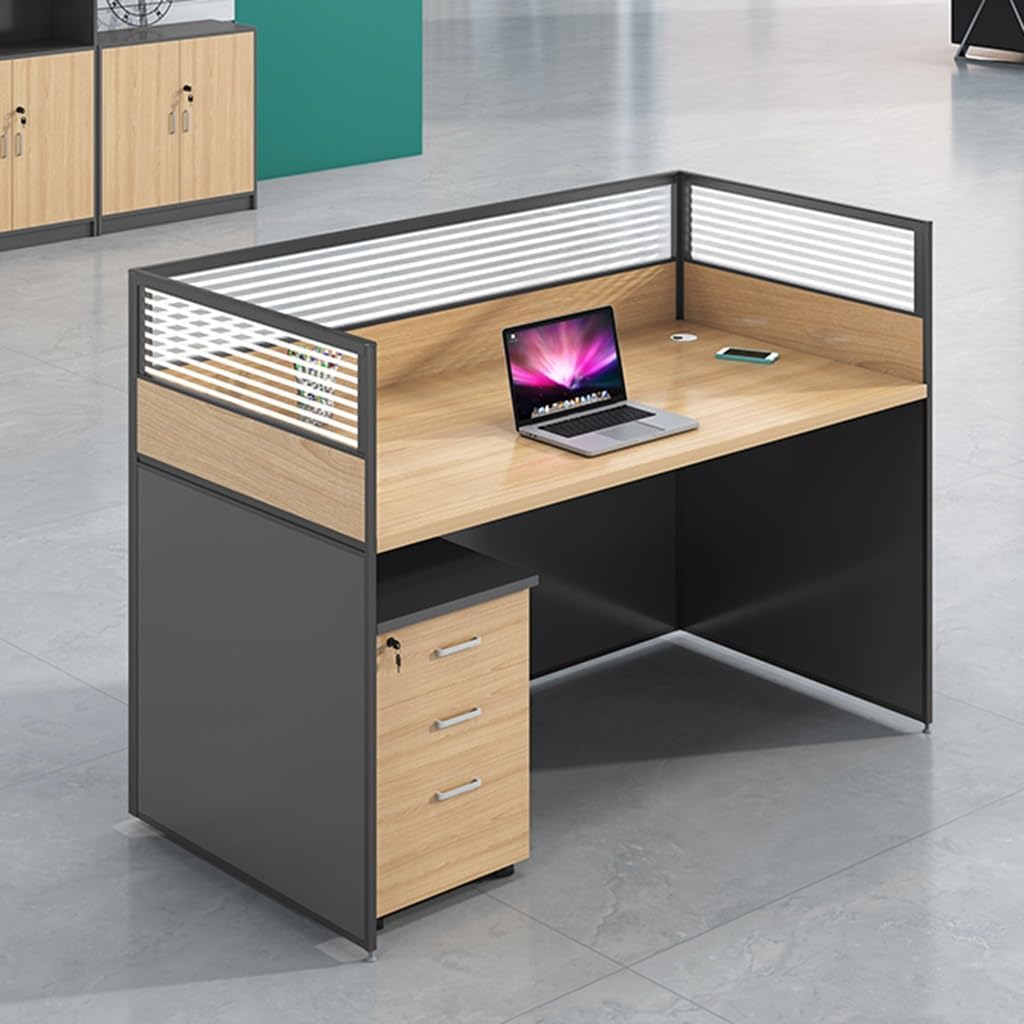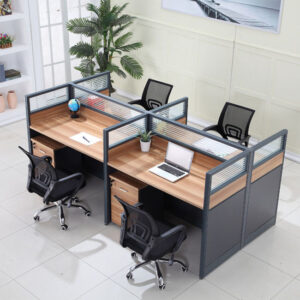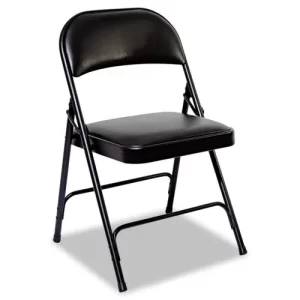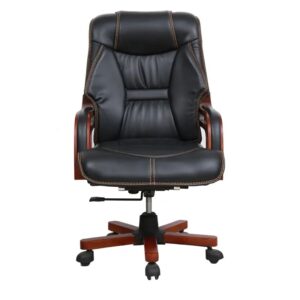1-Way Workstation
Original price was: KSh 44,500.00.KSh 40,000.00Current price is: KSh 40,000.00.
(In Stock)
A 1-way workstation, often referred to as a single-user or single-sided workstation, is a desk setup designed for individual use in an office or home office environment. Here’s a detailed description:
1. Design and Structure:
- Single User Focus: The 1-way workstation is designed to accommodate one person, providing a dedicated workspace that is often positioned against a wall or in a corner of a room. This setup maximizes the use of available space while offering a private work area.
- Desk Surface: The workstation typically features a flat, spacious desktop surface, large enough to hold a computer, monitor, keyboard, and other essential office supplies like notebooks, pens, and documents. The surface may have a laminate, wood, or metal finish, depending on the design.
- Shape: The desk is usually rectangular, but L-shaped designs are also common for those needing additional surface area or storage space. The L-shape allows for an extended workspace, perfect for multitasking or separating different tasks.
- Storage: Many 1-way workstations include built-in storage options, such as drawers, shelves, or cabinets, beneath or adjacent to the desk. This provides easy access to files, office supplies, and personal items while keeping the desktop clutter-free.
- Cable Management: Modern designs often incorporate cable management features, like grommets, cable trays, or built-in power outlets, to help organize and conceal wires and cords, keeping the workspace tidy.
2. Materials:
- Wood: Wooden 1-way workstations are common, offering a traditional or contemporary look depending on the finish. They may be made from solid wood, veneer, or engineered wood like MDF.
- Metal: Metal workstations, often with a minimalist design, are durable and can provide an industrial or modern aesthetic. They may feature a combination of metal frames with wood or glass tops.
- Glass: Some workstations feature glass tabletops, offering a sleek and modern appearance. Glass is often paired with metal frames for a sturdy yet elegant design.
- Laminate: Laminate surfaces are popular for their durability and easy maintenance. They can mimic the look of wood or other materials while being more affordable and resistant to scratches and stains.
3. Ergonomics:
- Comfortable Height: The desk height is typically designed to match standard ergonomic recommendations, ensuring that the user can sit comfortably with their feet flat on the floor and their arms at a right angle while typing.
- Adjustability: Some 1-way workstations include adjustable components, such as monitor stands, keyboard trays, or even height-adjustable desks that allow the user to switch between sitting and standing.
- Chair Compatibility: The workstation is designed to be used with an ergonomic office chair, which can be easily slid under the desk when not in use.
4. Style and Aesthetics:
- Traditional: Traditional 1-way workstations often feature rich wood tones, decorative details like molding or trim, and classic hardware. These workstations blend well with traditional or transitional decor.
- Modern/Contemporary: Modern workstations have clean lines, minimalistic designs, and may incorporate materials like metal, glass, or high-gloss finishes. They are often sleek and streamlined, fitting well into contemporary or minimalist spaces.
- Industrial: Industrial-style workstations typically combine raw materials like metal and wood, with a focus on functional, utilitarian design. Exposed hardware and simple forms are characteristic of this style.
- Scandinavian: Scandinavian designs emphasize simplicity, functionality, and light color palettes. These workstations often feature natural wood finishes, clean lines, and a minimalist aesthetic.
5. Functionality:
- Workspace Efficiency: The 1-way workstation is designed to maximize efficiency, providing all the necessary elements for a productive work environment within a compact footprint.
- Storage Solutions: With built-in storage like drawers, cabinets, or shelves, the workstation helps to keep essential items organized and within easy reach, reducing the need for additional furniture.
- Technology Integration: Many workstations are designed with modern technology in mind, incorporating features like cable management, charging ports, or monitor mounts to support a tech-driven workspace.
6. Sizes and Configurations:
- Compact: Compact workstations are ideal for small spaces, such as home offices or dorm rooms. These typically have a smaller desktop surface and minimal storage, focusing on space efficiency.
- Standard: Standard-sized workstations offer a balance between desktop space and storage, suitable for most office environments. They provide enough room for a computer, additional devices, and necessary paperwork.
- Executive: Larger, executive-style 1-way workstations may include additional features like extended desktops, extra storage options, or integrated technology, catering to those with more demanding work needs.
7. Placement and Arrangement:
- Against a Wall: The most common placement for a 1-way workstation is against a wall, which helps to define the workspace and make efficient use of space. This setup often leaves the rest of the room open for other furniture or movement.
- Corner Placement: In smaller rooms or offices, a 1-way workstation may be placed in a corner, utilizing space that might otherwise go unused. L-shaped workstations are particularly well-suited for corner placement.
8. Customization:
- Modular Options: Some workstations are part of modular office furniture systems, allowing for customization and expansion. Additional components like filing cabinets, overhead shelves, or return desks can be added as needed.
- Personalization: The desk can be personalized with accessories like desk organizers, lamps, or decorative items that reflect the user’s style and preferences.
9. Maintenance:
- Durability: The materials used in 1-way workstations are chosen for durability, ensuring that the desk withstands regular use over time. Surfaces are often resistant to scratches, stains, and other wear.
- Easy to Clean: The surfaces are typically easy to clean with a damp cloth, and the design often includes features that help prevent dust accumulation, such as smooth, flat surfaces and minimal crevices.
A 1-way workstation provides a dedicated and efficient workspace for individuals, whether in a professional office setting or a home office. It combines practicality with style, offering a well-organized environment conducive to productivity.







Reviews
There are no reviews yet.